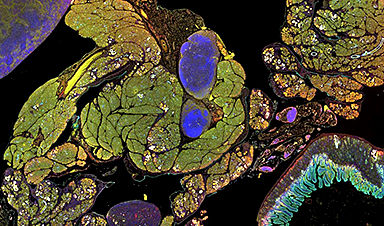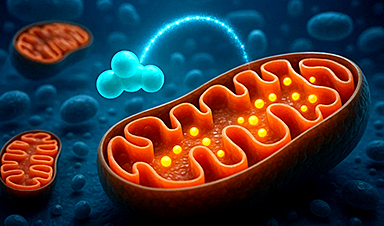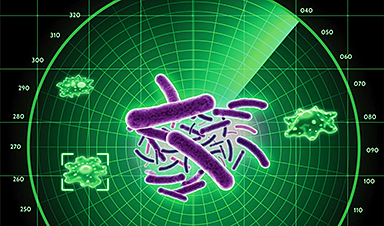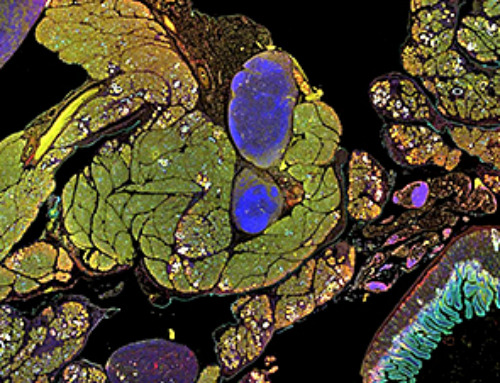Researchers have discovered the reason why targeted treatment for non-small cell lung cancer fails to work for some patients, particularly those who have never smoked.
The study shows that lung cancer cells with two particular genetic mutations are more likely to double their genome, which helps them to withstand treatment and develop resistance to it. Conducted by researchers from UCL, the Francis Crick Institute, and AstraZeneca, the study is published today (June 13) in the journal Nature Communications.
Epidemiology and Genetic Factors of NSCLC
In the UK, lung cancer is the third most common type of cancer and the leading cause of cancer death. Around 85% of patients with lung cancer have non-small cell lung cancer (NSCLC), and this is the most common type found in patients who have never smoked. Considered separately, ‘never smoked’ lung cancer is the fifth most common cause of cancer death in the world.
The most common genetic mutation found in NSCLC is in the epidermal growth factor receptor gene (EGFR), which enables cancer cells to grow faster. It is found in about 10-15% of NSCLC cases in the UK, particularly in patients who have never smoked.
Challenges of Current Treatments
Survival rates vary depending on how advanced the cancer is, with only around a third of patients with Stage IV NSCLC and an EGFR mutation surviving for up to three years.
Lung cancer treatments that target this mutation, known as EGFR inhibitors, have been available for over 15 years. However, while some patients see their cancer tumors shrink with EGFR inhibitors, other patients, particularly those with an additional mutation in the p53 gene (which plays a role in tumor suppression), fail to respond and experience far worse survival rates. But scientists and clinicians have so far been unable to explain why this is the case.
Insights From New Research
To find the answer, the researchers re-analyzed data from trials of the newest EGFR inhibitor, Osimertinib, developed by AstraZeneca. They looked at baseline scans and first follow-up scans taken a few months into treatment for patients with either EGFR-only or with EGFR and p53 mutations.
The team compared every tumor on the scans, far more than were measured in the original trial. They found that for patients with just the EGFR mutations, all tumors got smaller in response to treatment. But for patients with both mutations, while some tumors had shrunk others had grown, providing evidence of rapid drug resistance. This pattern of response, when some but not all areas of a cancer are shrinking in response to a drug treatment within an individual patient, is known as a ‘mixed response’ and is a challenge for oncologists caring for patients with cancer.
Study Findings and Future Implications
To investigate why some tumors in these patients might be more prone to drug resistance, the team then studied a mouse model with both the EGFR and p53 mutation. They found that within resistant tumors in these mice, far more cancer cells had doubled their genome, giving them extra copies of all their chromosomes.
The researchers then treated lung cancer cells in the lab, some with just the single EGFR mutation and some with both mutations, with an EGFR inhibitor. They found that within five weeks of exposure to the drug, a significantly higher percentage of cells with both the double mutation and double genomes had multiplied into new drug-resistant cells.
Toward Better Diagnostic Tools
Professor Charles Swanton, from UCL Cancer Institute and the Francis Crick Institute, said: “We’ve shown why having a p53 mutation is associated with worse survival in patients with non-smoking related lung cancer, which is the combination of EGFR and p53 mutations enabling genome doubling. This increases the risk of drug-resistant cells developing through chromosomal instability.”
Non-small cell lung cancer patients are already tested for EGFR and p53 mutations, but there is currently no standard test to detect the presence of whole genome doubling. The researchers are already looking to develop a diagnostic test for clinical use.
Clinical Applications and Future Research
Dr. Crispin Hiley, from UCL Cancer Institute and a Consultant Clinical Oncologist at UCLH, said: “Once we can identify patients with both EGFR and p53 mutations whose tumours display whole genome doubling, we can then treat these patients in a more selective way. This might mean more intensive follow up, early radiotherapy or ablation to target resistant tumors, or early use of combinations of EGFR inhibitors, such as Osimertinib, with other drugs including chemotherapy.”
Reference: “Heterogeneous responses to EGFR tyrosine kinase inhibition in non-small cell lung cancer result from chromosomal instability facilitated by whole genome doubling and TP53 co-mutation” by Sebastijan Hobor, Maise Al Bakir, Crispin T. Hiley and Marcin Skrzypski et al., 13 June 2024, Nature Communications.
DOI: https://doi.org/10.1038/s41467-024-47606-9
This work was supported by the Francis Crick Institute, which receives its core funding from Cancer Research UK, the UK Medical Research Council, and Wellcome.
News
Studies detail high rates of long COVID among healthcare, dental workers
Researchers have estimated approximately 8% of Americas have ever experienced long COVID, or lasting symptoms, following an acute COVID-19 infection. Now two recent international studies suggest that the percentage is much higher among healthcare workers [...]
Melting Arctic Ice May Unleash Ancient Deadly Diseases, Scientists Warn
Melting Arctic ice increases human and animal interactions, raising the risk of infectious disease spread. Researchers urge early intervention and surveillance. Climate change is opening new pathways for the spread of infectious diseases such [...]
Scientists May Have Found a Secret Weapon To Stop Pancreatic Cancer Before It Starts
Researchers at Cold Spring Harbor Laboratory have found that blocking the FGFR2 and EGFR genes can stop early-stage pancreatic cancer from progressing, offering a promising path toward prevention. Pancreatic cancer is expected to become [...]
Breakthrough Drug Restores Vision: Researchers Successfully Reverse Retinal Damage
Blocking the PROX1 protein allowed KAIST researchers to regenerate damaged retinas and restore vision in mice. Vision is one of the most important human senses, yet more than 300 million people around the world are at [...]
Differentiating cancerous and healthy cells through motion analysis
Researchers from Tokyo Metropolitan University have found that the motion of unlabeled cells can be used to tell whether they are cancerous or healthy. They observed malignant fibrosarcoma cells and [...]
This Tiny Cellular Gate Could Be the Key to Curing Cancer – And Regrowing Hair
After more than five decades of mystery, scientists have finally unveiled the detailed structure and function of a long-theorized molecular machine in our mitochondria — the mitochondrial pyruvate carrier. This microscopic gatekeeper controls how [...]
Unlocking Vision’s Secrets: Researchers Reveal 3D Structure of Key Eye Protein
Researchers have uncovered the 3D structure of RBP3, a key protein in vision, revealing how it transports retinoids and fatty acids and how its dysfunction may lead to retinal diseases. Proteins play a critical [...]
5 Key Facts About Nanoplastics and How They Affect the Human Body
Nanoplastics are typically defined as plastic particles smaller than 1000 nanometers. These particles are increasingly being detected in human tissues: they can bypass biological barriers, accumulate in organs, and may influence health in ways [...]
Measles Is Back: Doctors Warn of Dangerous Surge Across the U.S.
Parents are encouraged to contact their pediatrician if their child has been exposed to measles or is showing symptoms. Pediatric infectious disease experts are emphasizing the critical importance of measles vaccination, as the highly [...]
AI at the Speed of Light: How Silicon Photonics Are Reinventing Hardware
A cutting-edge AI acceleration platform powered by light rather than electricity could revolutionize how AI is trained and deployed. Using photonic integrated circuits made from advanced III-V semiconductors, researchers have developed a system that vastly [...]
A Grain of Brain, 523 Million Synapses, Most Complicated Neuroscience Experiment Ever Attempted
A team of over 150 scientists has achieved what once seemed impossible: a complete wiring and activity map of a tiny section of a mammalian brain. This feat, part of the MICrONS Project, rivals [...]
The Secret “Radar” Bacteria Use To Outsmart Their Enemies
A chemical radar allows bacteria to sense and eliminate predators. Investigating how microorganisms communicate deepens our understanding of the complex ecological interactions that shape our environment is an area of key focus for the [...]
Psychologists explore ethical issues associated with human-AI relationships
It's becoming increasingly commonplace for people to develop intimate, long-term relationships with artificial intelligence (AI) technologies. At their extreme, people have "married" their AI companions in non-legally binding ceremonies, and at least two people [...]
When You Lose Weight, Where Does It Actually Go?
Most health professionals lack a clear understanding of how body fat is lost, often subscribing to misconceptions like fat converting to energy or muscle. The truth is, fat is actually broken down into carbon [...]
How Everyday Plastics Quietly Turn Into DNA-Damaging Nanoparticles
The same unique structure that makes plastic so versatile also makes it susceptible to breaking down into harmful micro- and nanoscale particles. The world is saturated with trillions of microscopic and nanoscopic plastic particles, some smaller [...]
AI Outperforms Physicians in Real-World Urgent Care Decisions, Study Finds
The study, conducted at the virtual urgent care clinic Cedars-Sinai Connect in LA, compared recommendations given in about 500 visits of adult patients with relatively common symptoms – respiratory, urinary, eye, vaginal and dental. [...]





















